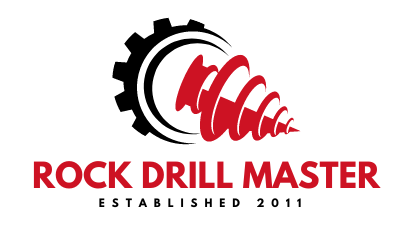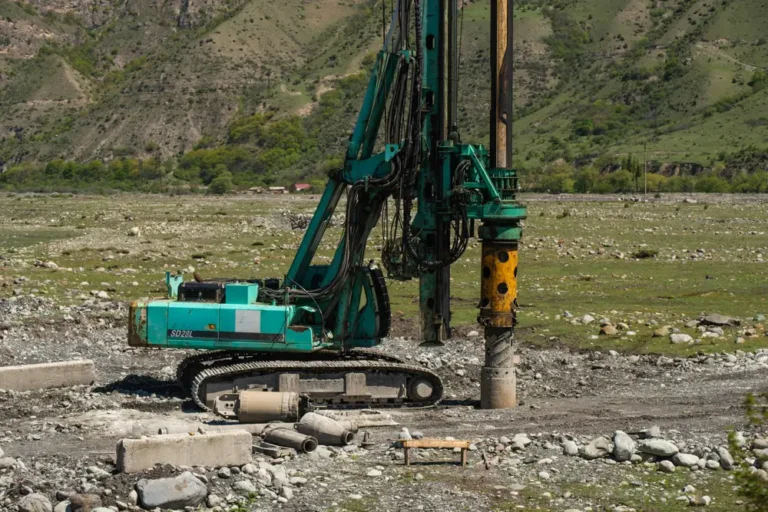Down-the-hole drilling has been a mainstay in the drilling industry for decades, but that doesn’t mean it’s standing still. Recent years have seen a variety of innovations in DTH technology – from smarter drill bits and hammers to advanced materials and digital integration. These innovations aim to make drilling faster, safer, and more cost-effective. In this article, we’ll highlight some of the latest developments in DTH drilling and what they mean for the industry.
1. High-Efficiency DTH Hammers
One key area of innovation is the DTH hammer itself. Manufacturers have been tweaking hammer designs to deliver harder hits with less air (or water):
- Valveless Hammer Designs: Traditional DTH hammers use a mechanical valve to direct airflow for the piston’s cycle. Newer valveless designs (or simplified valve designs) reduce internal losses and parts. Fewer moving parts means less to wear out and a more efficient energy transfer per blow. This results in higher impact energy and often higher blow frequency, increasing drilling speed.
- Higher Pressure Ratings: Standard DTH hammers typically operate around 300 psi (20 bar). Innovations have led to hammers that can handle 500+ psi (35+ bar) working pressure. With the right compressor, these high-pressure hammers can significantly boost penetration rates in hard rock. The challenge was ensuring the hammer materials and seals could withstand the extra stress – something advanced metallurgy and design simulation have helped solve.
- Adaptive Sealing Technology: New sealing materials and designs adjust to pressure and wear, maintaining efficiency over the hammer’s life. Some hammers now use proprietary seal compounds that better resist heat and abrasion, reducing the frequency of rebuilds.
The impact for drillers is faster drilling and longer hammer service intervals. However, it often requires investing in a more powerful air compressor setup to realize the full potential of high-performance hammers.
2. Smart Drill Bits (Digital and Sensor Integration)
Believe it or not, drill bits are getting smart. While a DTH bit is still a chunk of steel and carbide, there are moves to integrate sensors either in the bit or just above it in the drill string:
- Vibration and Inclination Sensors: Embedded near the bit, these sensors can detect when the bit starts to deviate or if it’s encountering unusual resistance. Data is sent uphole (via wired drill pipe or mud pulse telemetry if using water/mud) to alert the driller of potential issues like hole deviation or bit bogging.
- Bit Wear Monitoring: Research prototypes have included sensors to estimate wear on the bit – for example, monitoring vibration signatures or rotation torque that correlate with a worn bit. Real-time feedback could tell a driller “time to pull and inspect/replace the bit” before a failure happens.
- Digital Twins and Bit Tracking: Even without downhole sensors, companies are using digital modeling to predict bit performance and wear. Paired with actual drilling data (ROP, pressure, hours drilled), they adjust models to improve bit design iteratively. Some drillers now tag their bits (with RFID or simply tracking serial numbers) and monitor exactly how many meters each bit drills, feeding that info back to the manufacturer for continuous improvement.
While fully “smart bits” with built-in electronics are still emerging, the trend is toward more data-driven drilling. We already see this in surface drills that log everything – extending that intelligence to the bit level is the next frontier.
3. Advanced Materials and Coatings
Materials technology plays a huge role in pushing the limits of DTH tools:
- Carbide Technology: Tungsten carbide inserts have seen improvements in grain structure and binder formulas. Nanostructured carbides, for example, can offer a harder, more wear-resistant surface while maintaining toughness. Some bits now use different carbide grades in different parts of the bit (softer carbides on center for toughness, harder on the gauge for wear).
- Diamond-Enhanced Buttons: One innovation for abrasive or hard drilling is the use of polycrystalline diamond (PCD) coatings or tips on DTH bit buttons. Diamond-coated buttons can greatly increase wear life in certain conditions (like soft abrasive rock or when wanting to avoid sharpening). They’ve long been used in oil & gas bits (PDC bits) and are making their way into hard rock DTH bits for special cases.
- Steel Alloys: The bit bodies and hammer components are benefiting from new alloy compositions and heat treatments that increase strength and fatigue resistance. Some hammers use titanium or other lightweight alloys for non-wear parts to reduce overall weight (making handling easier without sacrificing durability at critical surfaces which remain steel).
- Surface Treatments: Bits and hammer parts can undergo treatments like shot peening (to induce beneficial compressive stress on the surface, reducing crack initiation) or specialized coatings that reduce friction. A hammer’s internal piston, for example, might have a low-friction coating to slide faster and with less wear.
What this means practically is longer-lasting tools. For example, a diamond-coated DTH bit might drill significantly more meters before needing replacement, especially in abrasive conditions where normal carbide would round off quickly. The trade-off is higher initial cost, but if the performance doubles or triples, it’s worth it.
(DTH Drill Bits for Precision Drilling | Rock drill bits | Drill King) A modern DTH hammer attached to a drill bit, ready for use. Innovations inside the hammer (like improved air flow and materials) along with smarter bit designs allow today’s DTH setups to outperform those from just a decade ago.
4. Improved Flushing and Cuttings Removal
Efficient cuttings removal is crucial in drilling. Innovations here include:
- Reverse Circulation DTH (RC DTH) improvements: RC DTH hammers, which bring cuttings up through the center of the drill string, have been refined. Newer RC bits and hammers minimize cross-contamination and maintain sample integrity better than older models. This is great for exploration drilling where getting a clean sample is critical.
- Aerated Drilling and Foam: Not exactly a hardware innovation, but a process one – using managed pressure and aerated fluids or foam with DTH drilling. This helps when drilling with DTH in softer formations or overburden to lift cuttings gently or control the borehole pressure. The innovation part is new foam formulations and techniques that allow switching between air hammer drilling and foam injection on the fly as conditions dictate.
- Cyclone Separators on Rig: To handle the increased volume of cuttings from faster drilling and deeper holes, some rigs now integrate better separators to deal with the dust/debris efficiently, making it easier to collect samples or dispose of cuttings even as DTH pushes into areas that used to be handled by more expensive coring.
5. Automation and Digital Control
Drill rigs including DTH rigs are becoming more automated. While this overlaps with top hammer rigs, DTH-specific automation includes:
- Autonomous Drilling Rigs: Several companies have deployed or are testing autonomous DTH drill rigs, especially in mining. These rigs can drill pre-planned patterns with minimal human intervention, thanks to GPS, onboard sensors, and AI algorithms adjusting drilling parameters.
- Auto Bit Changers: Although still uncommon, the idea is a carousel that can change the drill bit automatically when one wears out, or switch between a pilot bit and reamer, etc. This kind of system could reduce downtime in multi-bit operations (for example, drilling pilot hole then reaming with a larger DTH bit).
- Real-Time Optimization Software: Software that monitors drilling conditions and dynamically adjusts the rig’s feed pressure, rotation speed, and air flow to keep the DTH hammer in its optimal performance window. This can improve rate of penetration and avoid issues like getting the hammer stuck due to overfeeding in a cavity.
6. Niche Innovations
A few other notable developments:
- MUD Hammers: DTH hammers traditionally use air, but “MUD hammers” that can operate with drilling mud (for use in deep well drilling like oil & gas or deep geothermal) have been developed (Down-the-hole drill – Wikipedia). These allow the speed of hammer drilling in environments where air drilling isn’t possible (for example, very deep holes with high water pressure or when using conventional mud circulation systems).
- Noise Reduction: Working on making DTH drilling quieter by redesigning the exhaust ports or using muffler attachments on the hammer. This can be important for urban construction sites where noise is a concern.
- Environmentally Friendly Lubricants: Introduction of more eco-friendly hammer oils or even oil-less hammers. Some modern DTH hammers are advertised to run with minimal lubrication, or use special coatings to not require the same level of oil – reducing the environmental impact of oil mist in the exhaust.
The Impact of Innovations
All these innovations contribute to one or more of the following: speed, efficiency, accuracy, or sustainability. For a driller or project manager, the bottom line is often cost per meter drilled. Innovations like high-pressure hammers and better bits can lower that cost, but they might require upfront investment in new equipment or training to utilize effectively.
For example, a drilling contractor who upgrades to the latest hammers and bits may drill more meters in a shift than before, allowing them to bid more competitively or complete projects faster. A mining company that implements autonomous DTH drills could increase safety (by removing operators from hazardous bench areas) and run more shifts per day.
The sustainability aspect is also important. Faster drilling with fewer bit changes means less waste. Using less oil or having cleaner cuttings handling means less environmental footprint.
(Best Practices for Maintaining DTH Drill Bits) Rows of newly manufactured DTH bits featuring the latest designs and materials. Today’s bits often incorporate improved carbides and body designs resulting from years of R&D and field feedback.
Keeping Up with the Change
For those in the drilling industry, keeping up with innovations can provide a competitive edge. Here are a few tips:
- Stay informed through trade publications, supplier newsletters, and industry conferences – manufacturers often announce new products and tech there.
- Pilot test new technology on a small scale. For instance, trial a couple of new bits alongside your usual ones to directly measure the difference.
- Train your crew on new systems (like automated rig controls or using high-pressure compressors safely). The best technology still needs skilled operators or technicians behind it.
- Consider the lifecycle: an innovation might make sense if you plan to be in the business long enough to reap the benefits (e.g., investing in a pricey new rig that in five years will pay off through higher productivity).
Conclusion
DTH drilling technology continues to evolve, solving long-standing challenges and opening new possibilities in drilling. From more powerful hammers and smarter bits to the integration of sensors and automation, these advancements aim to make drilling more efficient and precise. Embracing innovation requires careful consideration and sometimes significant investment, but the rewards can be substantial in productivity and cost savings.
As we look to the future, we can expect DTH drilling to become even more intelligent – perhaps fully self-optimizing drills that adjust on the fly, or bits that communicate their own condition. For now, the latest innovations already provide plenty of tools for drillers to tackle tougher projects, drill deeper and faster, and do so more safely and responsibly than ever before.






